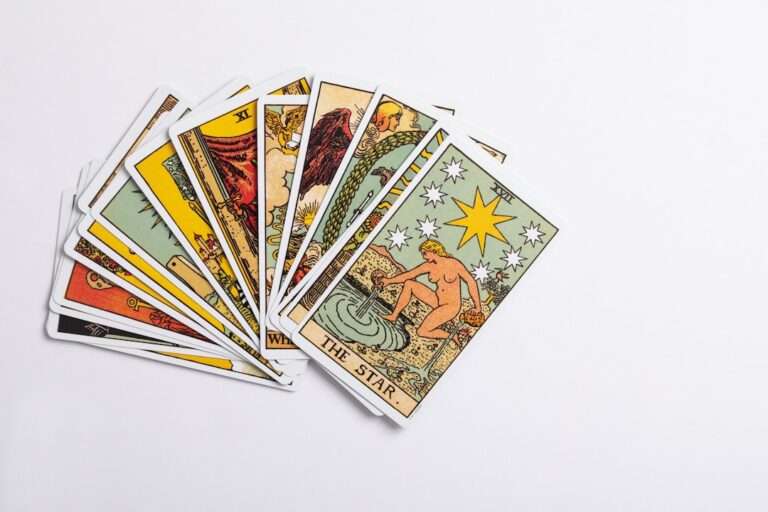Sports Symbolism – The Ultimate Guide

Sports symbols play a significant role in the world of sports. They are more than just logos or mascots; they are powerful representations of teams, athletes, and the spirit of competition. These symbols have the ability to unite fans, evoke emotions, and create a sense of identity and belonging. From the iconic Olympic rings to the famous logos of professional sports teams, sports symbols have become an integral part of the sports industry. In this article, we will explore the power and significance of sports symbols, their evolution throughout history, their impact on fans and society, and their role in popular culture.
The Power of Sports Symbols: Understanding Their Significance
Sports symbols are visual representations that hold deep meaning for fans. They serve as a rallying point for supporters, creating a sense of unity and pride. These symbols can be logos, mascots, or even gestures that are associated with a particular team or sport. They have the power to evoke strong emotions and create a sense of identity and belonging among fans.
For example, the New York Yankees logo is one of the most recognizable sports symbols in the world. The interlocking “NY” represents not only the team but also the city itself. It is a symbol of pride for New Yorkers and a source of inspiration for Yankees fans around the world. Similarly, the Olympic rings are a powerful symbol that represents unity, friendship, and excellence in sports. These symbols transcend language and cultural barriers, bringing people together from all corners of the globe.
From the Olympics to the Super Bowl: A Brief History of Sports Symbolism
Sports symbolism has a long history that dates back to ancient times. In ancient Greece, for example, athletes would compete in events wearing symbols that represented their city-states. These symbols were often displayed on shields or banners and served as a way to identify and support their athletes.
In modern times, sports symbolism has become more sophisticated and widespread. The Olympic Games, which began in ancient Greece and were revived in the late 19th century, have become a global celebration of sportsmanship and unity. The Olympic rings, designed by Pierre de Coubertin in 1913, are one of the most iconic sports symbols in the world. They represent the five continents and the coming together of athletes from all over the world.
Similarly, the Super Bowl, the championship game of the National Football League (NFL), has its own set of symbols that have become synonymous with the event. The Vince Lombardi Trophy, awarded to the winning team, is a symbol of excellence and achievement. The Super Bowl logo itself has evolved over the years, reflecting the changing times and trends in design.
The Evolution of Sports Logos: How Teams Adapt to Changing Times
Sports logos have undergone significant changes over time. In the early days of sports, logos were simple and often consisted of just a team name or initials. As technology and design capabilities advanced, logos became more intricate and visually appealing.
For example, the logo of the Chicago Bulls, an NBA team, has evolved over the years. The original logo, introduced in 1966, featured a simple depiction of a bull’s head. Over time, the logo became more stylized and dynamic, reflecting the team’s success and popularity. The current logo, introduced in 1996, features a fierce-looking bull with red eyes and sharp horns.
Similarly, the logo of the Los Angeles Lakers, an NBA team known for its success and star players, has also evolved over time. The original logo, introduced in 1960 when the team was based in Minneapolis, featured a basketball with “Lakers” written across it. When the team moved to Los Angeles in 1960, the logo was updated to include palm trees and waves to reflect the California lifestyle.
The Psychology of Sports Symbols: Why Fans Connect with Their Teams
Sports symbols play a crucial role in the emotional connection fans have with their favorite teams. These symbols represent more than just a logo or a mascot; they represent a sense of identity and belonging. When fans wear their team’s colors or display their logo, they are expressing their loyalty and support.
The psychology behind this connection lies in the human need for belonging and affiliation. By identifying with a particular team, fans become part of a larger community. They feel a sense of camaraderie with other fans and share in the triumphs and defeats of their team. Sports symbols serve as a visual reminder of this connection, reinforcing the emotional bond between fans and their teams.
Additionally, sports symbols can evoke positive emotions such as pride, excitement, and joy. When fans see their team’s logo or mascot, they are reminded of the thrilling moments they have experienced while watching their team play. This emotional connection can be so strong that it can influence fans’ behavior, such as attending games, purchasing merchandise, or even naming their children after their favorite athletes.
The Business of Sports Symbols: How Merchandise Drives Revenue

Sports symbols have a significant financial impact on the sports industry. The sale of merchandise such as jerseys, hats, and memorabilia is a major source of revenue for teams and leagues. Fans are willing to spend money to show their support for their favorite teams and athletes.
Successful sports merchandise and branding campaigns can generate millions of dollars in revenue. For example, the New York Yankees consistently rank among the top-selling teams in terms of merchandise sales. The team’s iconic logo is instantly recognizable and has become a symbol of prestige and success. Fans are proud to wear Yankees gear and show off their allegiance to the team.
Similarly, the National Football League (NFL) has built a billion-dollar industry around its teams’ logos and mascots. From jerseys to hats to collectible items, fans can find a wide range of merchandise featuring their favorite team’s symbols. The Super Bowl, the league’s championship game, is one of the most-watched sporting events in the world and generates millions of dollars in revenue from ticket sales, advertising, and merchandise.
The Role of Mascots in Sports: Bringing Teams to Life
Mascots play a crucial role in sports, bringing teams to life and engaging with fans. These costumed characters serve as ambassadors for their teams, entertaining fans and creating a fun and lively atmosphere at games and events.
Mascots are often designed to reflect the team’s identity and values. For example, the Philadelphia Phillies, a Major League Baseball team, have a mascot named “Phillie Phanatic.” The Phanatic is a green, furry creature with a long snout and a mischievous personality. He has become one of the most beloved mascots in sports and is known for his antics and interactions with fans.
Mascots also play a role in marketing and branding. They are often featured on merchandise such as t-shirts, hats, and toys, further promoting the team’s symbols and generating revenue. Fans of all ages enjoy interacting with mascots, whether it’s taking a photo with them or participating in their on-field antics.
The Dark Side of Sports Symbols: Controversies and Scandals
While sports symbols can bring people together, they can also be the subject of controversy and scandal. Certain symbols may be seen as offensive or insensitive, leading to backlash from fans and society.
For example, the use of Native American imagery in sports logos and mascots has been a source of controversy for many years. Some argue that these symbols perpetuate stereotypes and disrespect Native American culture. In recent years, there has been a push to change or retire these symbols, with some teams voluntarily making changes to address these concerns.
Similarly, symbols associated with racist or discriminatory ideologies have also faced criticism. The use of Confederate flags or symbols associated with white supremacy in sports has sparked outrage and calls for change. In response to these concerns, some teams and leagues have taken steps to distance themselves from these symbols and promote inclusivity and diversity.
Sports Symbols in Pop Culture: From Movies to Music Videos
Sports symbols have become ingrained in popular culture, appearing in movies, TV shows, and music videos. These symbols are often used to evoke a sense of excitement, competition, and triumph.
In movies, sports symbols are frequently used to create a sense of authenticity and realism. For example, the movie “Rocky” features the iconic image of Rocky Balboa running up the steps of the Philadelphia Museum of Art, a symbol of determination and perseverance. The movie “Field of Dreams” uses the symbol of a baseball field in an Iowa cornfield to represent the power of dreams and the love of the game.
In music videos, sports symbols are often used to convey a sense of energy and passion. Artists such as Beyoncé, Jay-Z, and Kanye West have incorporated sports imagery into their music videos, using symbols such as jerseys, trophies, and stadiums to enhance the visual storytelling.
The Future of Sports Symbols: Predictions and Trends
The future of sports symbols is likely to be shaped by advancements in technology and changes in societal attitudes. As technology continues to evolve, we can expect to see more interactive and immersive experiences for fans. Virtual reality and augmented reality technologies may allow fans to experience games and events in new and exciting ways.
In terms of design trends, minimalism and simplicity are likely to continue to be popular. Clean lines, bold colors, and iconic imagery will remain key elements in successful sports logos. However, we may also see a shift towards more inclusive and diverse representations in sports symbols. As society becomes more aware of the importance of representation and inclusivity, teams and leagues may be more mindful of the symbols they choose to represent their brand.
How to Design a Winning Sports Logo: Tips and Tricks from the Pros
Designing a successful sports logo requires careful consideration of the team’s identity, values, and target audience. Here are some tips and tricks from the pros:
1. Keep it simple: A clean and simple design is often more memorable and versatile. Avoid cluttering the logo with too many elements or details.
2. Use bold colors: Bold and vibrant colors can make a logo stand out and evoke strong emotions. Consider using colors that are associated with the team or sport.
3. Incorporate symbolism: Symbols can add depth and meaning to a logo. Consider incorporating elements that represent the team’s identity or values.
4. Make it versatile: A good sports logo should be able to be scaled up or down without losing its impact. It should also work well in both color and black-and-white formats.
5. Test it with fans: Before finalizing a logo, gather feedback from fans and target audience. Their input can provide valuable insights and help ensure that the logo resonates with its intended audience.
Sports symbols are more than just logos or mascots; they are powerful representations of teams, athletes, and the spirit of competition. These symbols have the ability to unite fans, evoke emotions, and create a sense of identity and belonging. From the Olympic rings to the logos of professional sports teams, sports symbols have become an integral part of the sports industry.
The evolution of sports symbols throughout history reflects changes in design trends, technology, and societal attitudes. As fans continue to connect with their favorite teams on an emotional level, sports symbols will continue to play a crucial role in the sports industry. The future of sports branding and merchandise will likely be shaped by advancements in technology, changes in societal attitudes, and the need for inclusivity and diversity. As we look ahead, it is clear that sports symbols will continue to be a powerful force in the world of sports.
If you’re interested in exploring the symbolism of sports and its impact on the body, you might also find the article “Massage for Pinched Nerves: Unlocking the Symbolic Healing Power” intriguing. This article delves into the therapeutic benefits of massage therapy for pinched nerves, highlighting how this ancient practice can not only alleviate physical discomfort but also symbolically release blocked energy and restore balance to the body. Discover more about this fascinating topic at Symbolism Hub.
FAQs
What is sports symbolism?
Sports symbolism refers to the use of symbols, signs, and gestures in sports to convey a message or represent a particular idea or concept.
What are some common sports symbols?
Some common sports symbols include team logos, mascots, colors, and uniforms. Other symbols may include hand gestures, such as the “OK” sign or the “thumbs up” sign.
What is the significance of sports symbols?
Sports symbols can represent a variety of things, such as team identity, pride, and unity. They can also be used to intimidate opponents or rally fans.
How do sports symbols impact fans?
Sports symbols can have a significant impact on fans, as they often serve as a way for fans to identify with their favorite teams and players. They can also create a sense of community and belonging among fans.
What is the history of sports symbolism?
Sports symbolism has been used for centuries, with ancient civilizations using symbols and gestures to represent their athletic achievements. In modern times, sports symbols have become an integral part of sports culture, with teams and fans using them to represent their identity and values.
How do sports symbols differ across cultures?
Sports symbols can vary greatly across cultures, with different countries and regions having their own unique symbols and gestures. For example, the “V for victory” sign is commonly used in Western cultures, while the “thumbs up” sign is more commonly used in Asian cultures.





